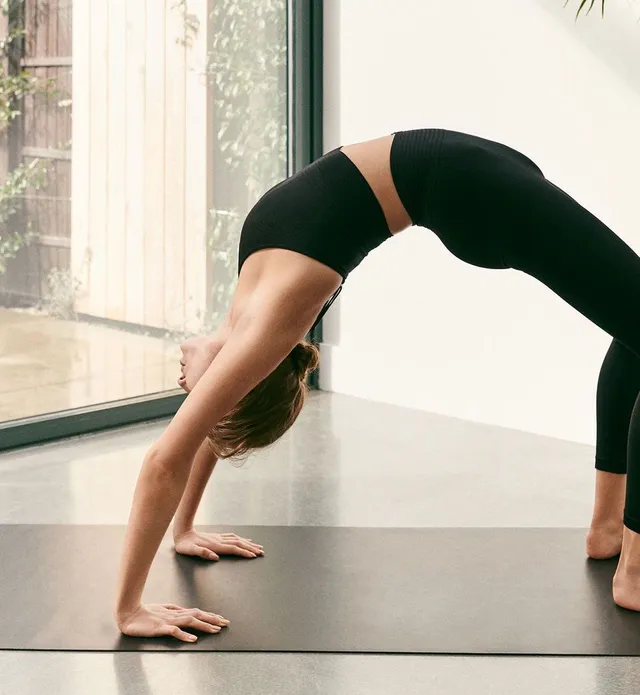
URDHVA DHANURASANA
Urdhva means upward, Dhanu is a bow. In this pose, the body is arched back, extended backward along its entire length, and carried on the hands and feet. This posture tones the spine by fully stretching it and keeps the body alert and flexible, the back, arms and wrists strengthening and filling with life. When the posture is mastered and the head is relaxed, it creates a great calming effect on the head. For this the drishti must be soft and internal and this also prevents creating tension in the neck.
This asana tones the spinal cord and relaxes the tailbone (the triangular bone that sits at the bottom of the spine). The curvature should be worked primarily in the middle and upper back rather than the lower back. The sternum should rise well and the collarbones should widen while keeping the ribs light. The gluteal muscles are tight due to the placement of the lower back but not in a thoughtful way. The gluteus maximus muscle is used to lengthen the hip, and the gluteus medius and gluteus minimus create the internal rotating action of the femurs. The lower back must imperatively remain elongated thanks to the inclination of the pelvic floor in anteversion.
The posture, practiced regularly, alleviates pain due to displacements of intervertebral discs in the lower part of the spine. Thanks to the back flexion position, the stomach and chest muscles are fully stretched.
Urdhva Dhanurasana provides great vitality, great energy and a feeling of lightness when it comes to assuming this posture from the standing posture for advanced practitioners.
Urdhva Dhanurasana counteracts the kyphosis of the upper back by opening the rib cage and allows people who have their breasts sagging to open and release the emotions hidden in the shoulder girdle. The backward extensions open Anahata, the heart chakra. Anahata, the fourth chakra symbolized by the color green, is the center of all the chakras, like a point of balance, it connects the Earth, the lower chakras either the physical body, to the sky, the upper chakras or the spirit. It is therefore located in the center of the body at the level of the rib cage, heart, lungs, diaphragm, lymph glands, chest and esophagus. It symbolizes love, kindness to ourselves and to others, security, trust, hope and the search for balance. It makes you sensitive to compassion, it is the center of forgiveness and detachment. When this chakra is open, we feel less aggressive, less angry and less resentful. This unlocked chakra makes full of life and love towards all living beings.
Access the annotated class sequence with posture images and join the community of teachers!